The Collar in Hanfu

When we talk about the Hanfu collar styles, we’re not just referring to the area around the neck, but also the fabric that falls below it. Hanfu garments are usually made from two pieces of fabric at the front that don’t fully connect, and they’re worn in a way that’s similar to how you would wear a jacket. This unique design means that the Hanfu collars also refer to the way these two pieces of fabric come together when the garment is put on.
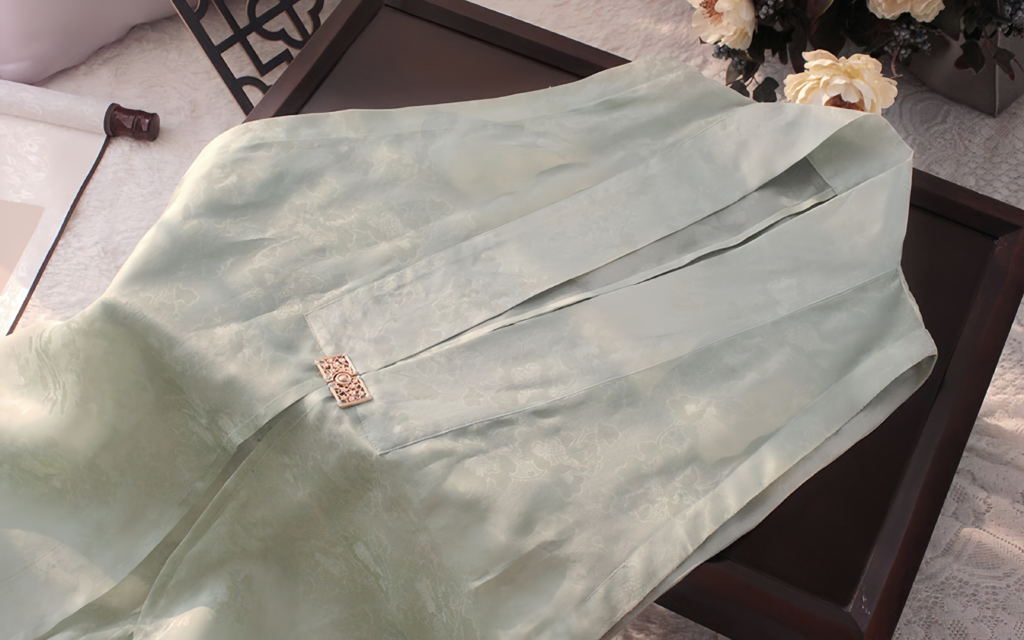
1. Cross Collar (交领)
One of the first types of Hanfu collars you might come across is the cross collar. This collar consists of two overlapping pieces of fabric, often secured with two or three ties. The edges of each piece are usually finished with a thicker or contrasting color, giving it a distinctive look. The most common way to wear this collar is with the right side over the left, following a long-standing tradition in Chinese clothing.
To put it on, you would tie the left side first, followed by the right side. From the front, the collar forms a “Y” shape. This cross-over design was also seen in the Ming dynasty, and is often used in the attire of non-Han ethnic groups, as well as funeral garments. The rule of right over left is an important cultural concept in Hanfu. The cross collar can range from shallow to deep, with the cross appearing either just below the neck or across the torso, depending on the style.

2. Stand-Up Collar (立领)
The stand-up collar is a hallmark of the Ming dynasty. This collar stands upright, resembling a turtleneck, and curves downward to the back of the neck. The two sides of the collar are usually fastened with buttons. The stand-up collar is often combined with other styles, such as parallel or diagonal collars, lower down the body. Sometimes, the collar can be folded down to reveal a contrasting inner lining, adding an extra layer of color and texture.
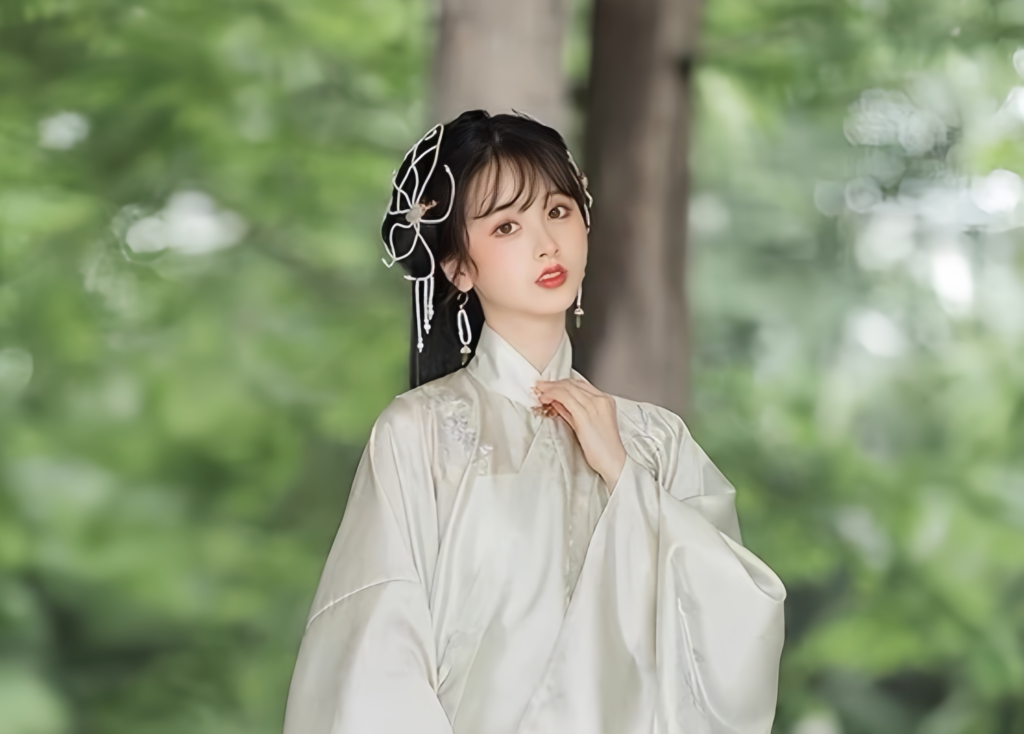
3. Parallel Collar (对襟)
Another common Hanfu collar style is the parallel collar, particularly seen in the outer garments from before the Ming dynasty, such as robes and tunics. In the Ming dynasty, the parallel collar refers to the way the front halves of the garment are symmetrical, fastened together with buttons or ties at the front. Some parallel collars are open, with the two sides falling straight down from the front, with a small gap in the middle (this is also known as a straight collar). The middle part of this collar might have a tie, or it might simply remain open.

4. Diagonal Collar (斜襟)
This is an alternative to the stand-up collar. The diagonal collar (also called “Big Collar”) begins at the end of the stand-up collar and slants diagonally toward the right side of the wearer’s body, ending at the underarm. It’s held in place with buttons, ties, or a belt. The term “diagonal collar” (ending in “jin”) is often used to describe the arrangement of the fabric on the front, which can either be symmetrical or diagonal.
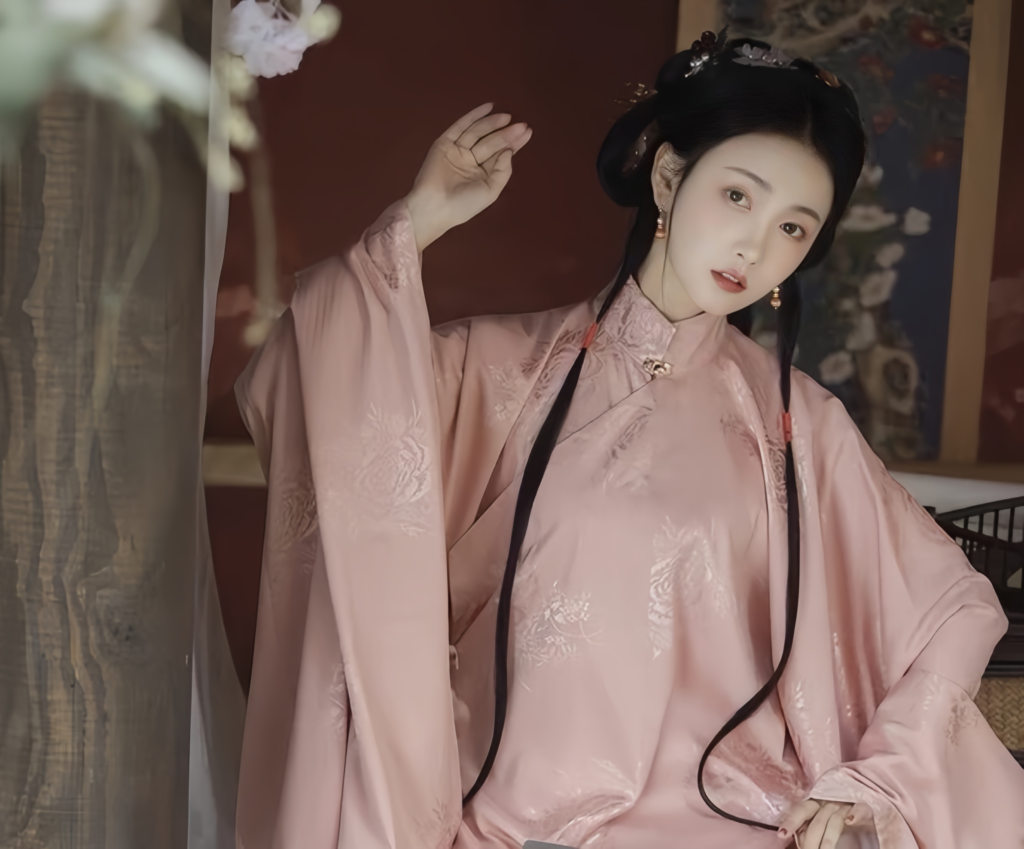
5. Combined Collar (合领)
The combined collar is similar to the parallel or straight collar, but the top part of the collar slopes slightly inward and meets in the middle before hanging straight down. This design is common in the Song and Ming dynasties, particularly for outer garments that were mostly made with robes rather than jackets. These collars were usually left open, but sometimes they could be fastened with ties or buttons to keep them closed. In the Song dynasty, a similar design was used where the sides of the collar would be folded back and sewn into place.
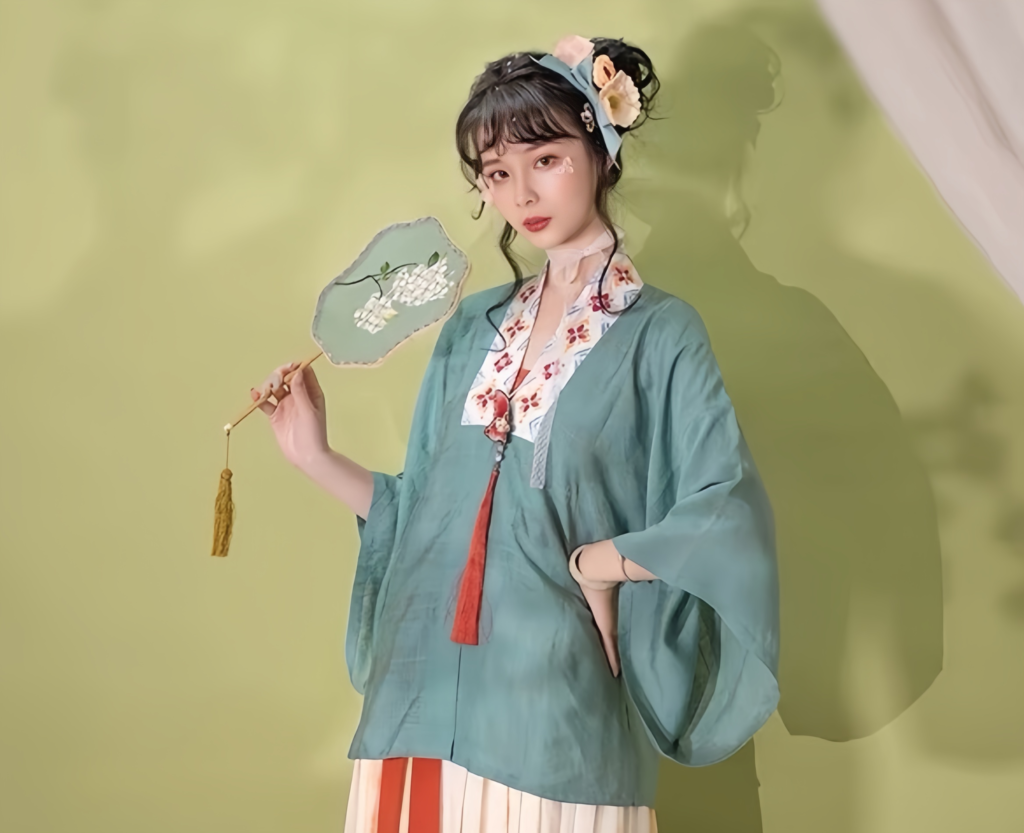
6. Round Collar (圆领)
The round collar is one of the most recognizable Hanfu collar styles, particularly seen in round-collared robes. This collar can be found across various Hanfu designs. For example, many Tang dynasty shirts had round collars, and Ming dynasty jackets and tunics often used round collars with parallel closures.
Most round collars are paired with a large collar, fastened with four buttons—two on each side of the neck, and two at the middle of the chest. The degree of fabric overlap may vary from the Tang to the Ming dynasty, with the Tang version of the round collar being slightly higher on the neck and often flipping outward, while the Song and Ming versions tend to be more asymmetrical and without this feature.
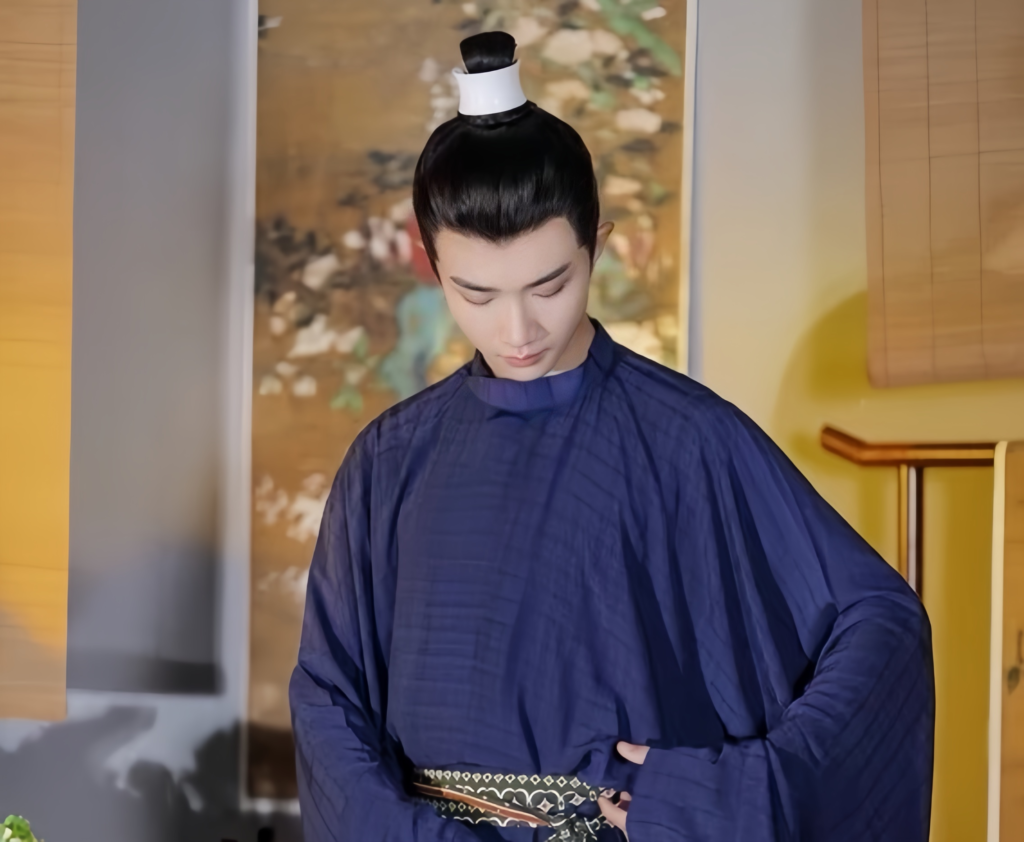
7. Square Collar (方领)
The square collar is quite similar to the round collar, except that it is square-shaped. It was also a common style in Ming dynasty clothing, though it’s not as wide as the round collar. This style was typically worn with a parallel closure at the front.
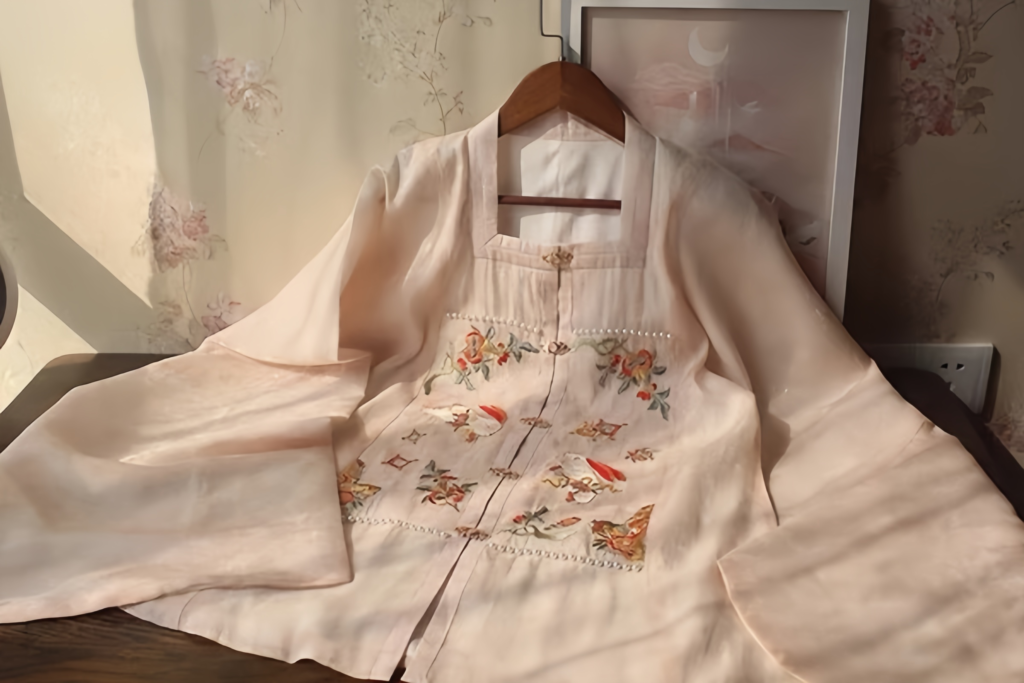
8. Cross-Worn Collar (对穿交)
The cross-worn collar isn’t so much a type of collar but a method of wearing it. This style involves crossing parallel or straight Hanfu collars to form an X shape across the front of the body, mimicking the style of a skirt collar. The garment is then secured by tying the skirt to the waistband. This style was popular in Song dynasty women’s clothing, and the cross collar usually falls lower on the torso, typically worn only as an outer layer. It’s an interesting example of traditional Hanfu collars design, emphasizing how Hanfu collar styles can be varied in terms of both function and aesthetic.
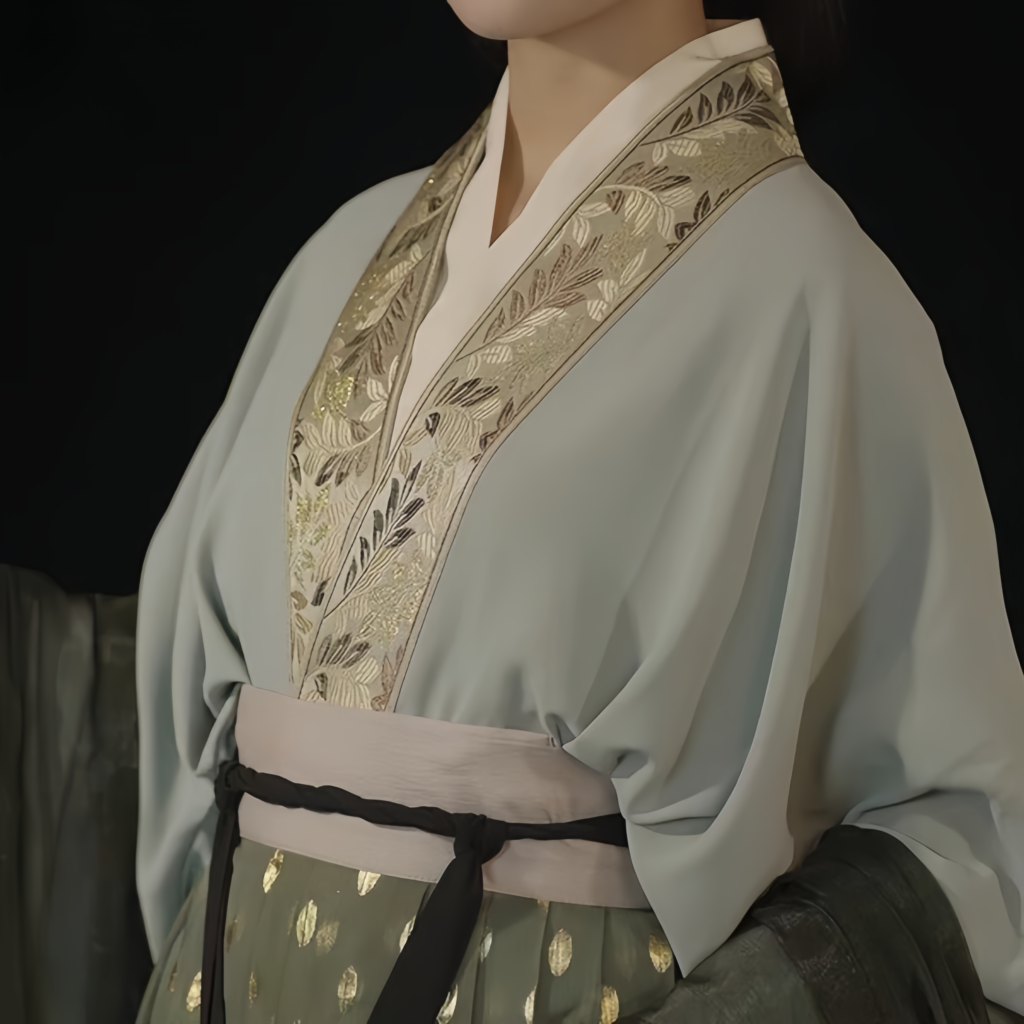
9. U-Shaped Collar (U形领)
The U-shaped collar is similar to the round collar but has a deeper dip and is more revealing, often exposing more of the chest. This collar is unique to women’s Hanfu and was especially popular in short jackets and tunics during the Tang dynasty. The U-shaped collar typically does not have the cross-design found in round collars, which can either be pulled over the head or fastened with buttons at the front. It’s a distinct example of how Hanfu collar styles can reflect both the era and the gender-specific designs in Hanfu fashion.

10. Drooping Collar (垂领)
The drooping collar is another distinctive feature of Tang dynasty women’s clothing, frequently seen in short outerwear worn over long-sleeved, slightly high-collared shirts or other inner garments. This collar is similar to a deep V-neck, with two sides tied together. The V-point can be deep enough to touch the waist or shallow, resembling a drooping collar.
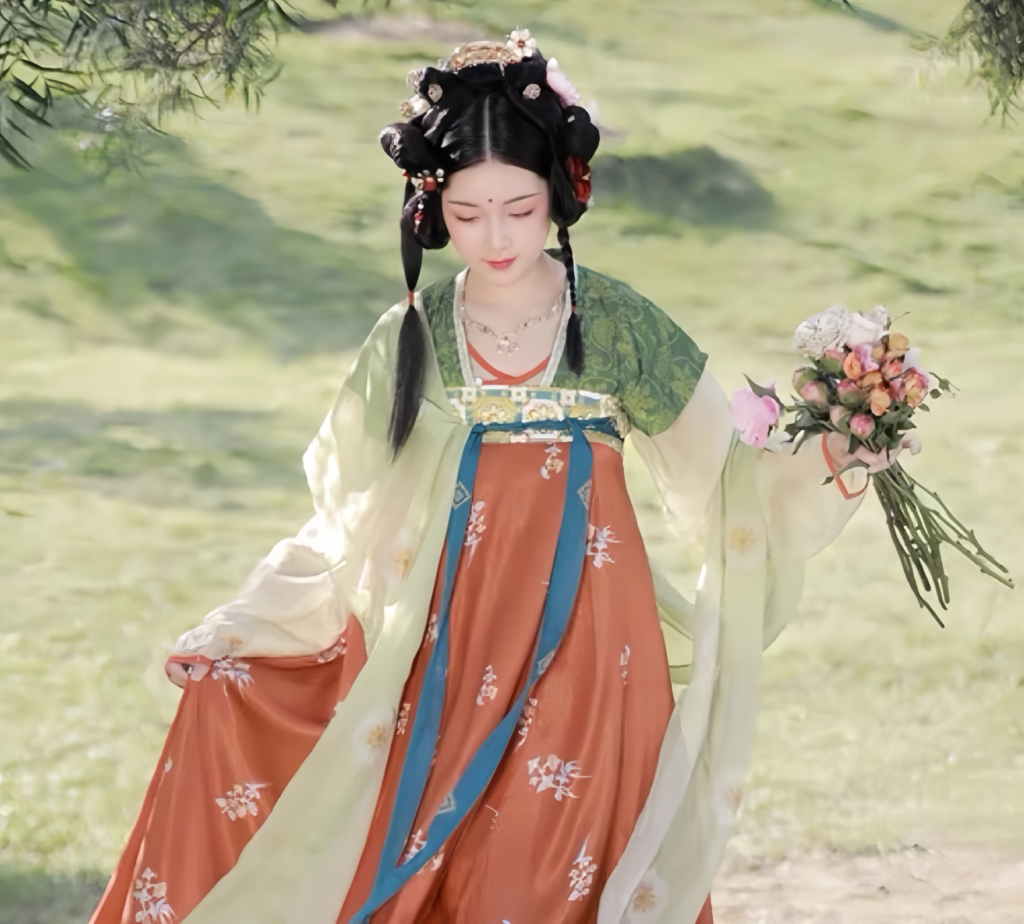
11. Curved Collar (曲领)
The curved collar is a rare style found in certain types of inner garments from the Han and Jin dynasties, as well as in garments from the Jin dynasty. This collar features a slightly curved section on one side of the garment, similar to a high collar. The other side is pulled across and fastened with a tie, resembling a foot-binding design. This collar isn’t very common, but it has a unique charm—best paired with a second-layer outer garment or jacket.

For a comprehensive overview of Hanfu collar styles, please refer to this detailed article: Garment collars in hanfu – Wikipedia.



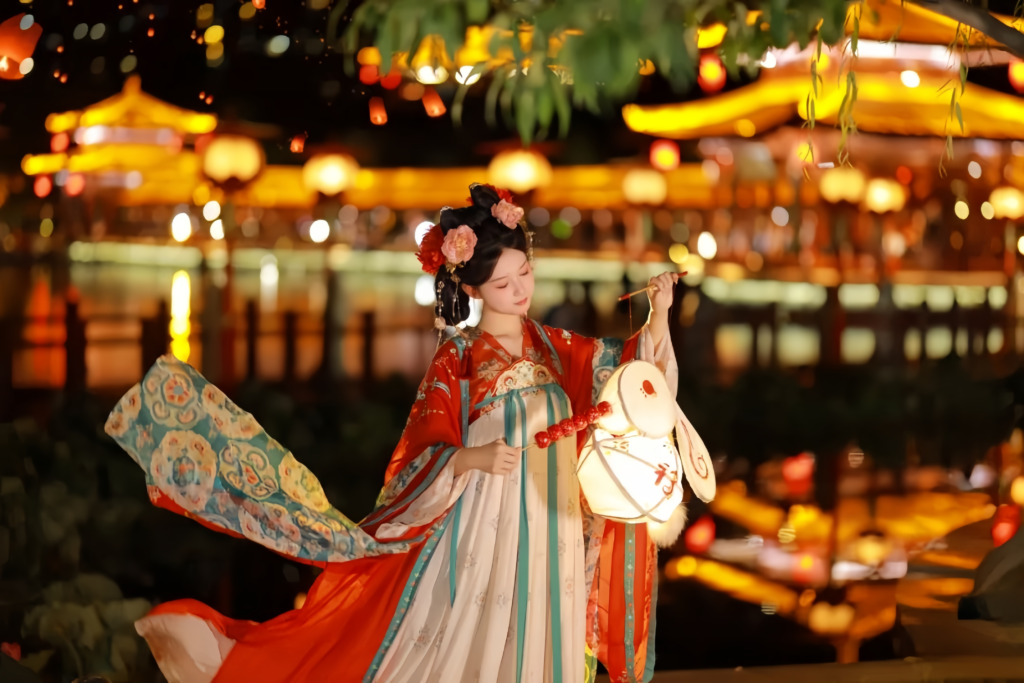

Responses